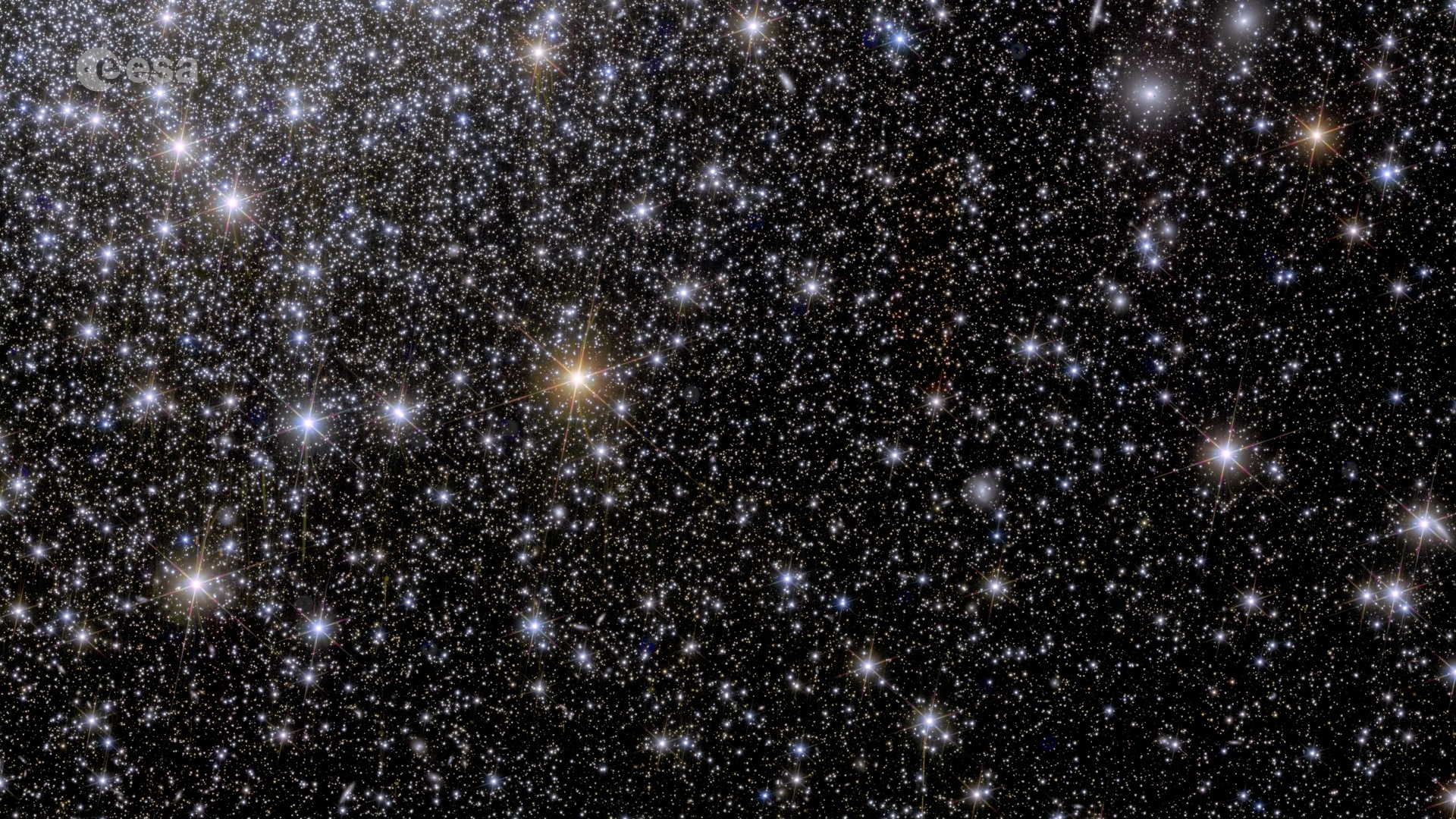Euclid’s view of globular cluster NGC 6397
This sparkly image shows Euclid’s view on a globular cluster called NGC 6397. Globular clusters are collections of hundreds of thousands of stars held together by gravity.
Located about 7800 light-years from Earth, NGC 6397 is the second-closest globular cluster to us. Together with other globular clusters it orbits in the disc of the Milky Way, where the majority of stars are located.


Access the video
Globular clusters are some of the oldest objects in the Universe. That’s why they contain a lot of clues about the history and evolution of their host galaxies, like this one for the Milky Way.

The challenge is that it is typically difficult to observe an entire globular cluster in just one sitting. Their centres contain lots of stars, so many that the brightest ‘drown out’ the fainter ones. Their outer regions extend a long way out and contain mostly low-mass, faint stars. It is the faint stars that can tell us about previous interactions with the Milky Way.
“Currently no other telescope than Euclid can observe the entire globular cluster and at the same time distinguish its faint stellar members in the outer regions from other cosmic sources,” explains Euclid Consortium scientist Davide Massari of the National Institute for Astrophysics in Italy.
For example, the NASA/ESA Hubble Space Telescope has observed the core of NGC 6397 in detail, but it would take a lot of observing time with Hubble to map the outskirts of the cluster, something Euclid can do in just one hour. ESA’s Gaia mission can track the movement of globular clusters, but can’t tell what’s going on with very faint stars. And telescopes from the ground can cover a larger field, but with a poorer depth and resolution, so they can’t distinguish the faint outskirts entirely.

Davide and his colleagues will use Euclid to search for ‘tidal tails’ in globular clusters: a tidal tail is a trail of stars that extends far beyond the cluster because of a previous interaction with a galaxy.
“We expect all of the globular clusters in the Milky Way to have them, but so far we have only seen them around just a few,” says Davide. “If there are no tidal tails, then there could be a dark matter halo around the globular cluster, preventing the outer stars from escaping. But we don’t expect dark matter haloes around smaller-scale objects like globular clusters, only around bigger structures like dwarf galaxies or the Milky Way itself.”
If Davide and his team find tidal tails for NGC 6397 and other globular clusters in the Milky Way, that would allow them to very precisely calculate how the clusters orbit our galaxy. “And this will tell us how dark matter is distributed in the Milky Way,” Davide adds.

With Euclid’s observations, the team also wants to determine the age of globular clusters, to investigate the chemical properties of their stellar populations, and to study ultra-cool dwarf stars – the lowest mass members of the cluster.
Click on the image on the right to explore the cluster by clicking on the different markers and zooming into different parts.














 Germany
Germany
 Austria
Austria
 Belgium
Belgium
 Denmark
Denmark
 Spain
Spain
 Estonia
Estonia
 Finland
Finland
 France
France
 Greece
Greece
 Hungary
Hungary
 Ireland
Ireland
 Italy
Italy
 Luxembourg
Luxembourg
 Norway
Norway
 The Netherlands
The Netherlands
 Poland
Poland
 Portugal
Portugal
 Czechia
Czechia
 Romania
Romania
 United Kingdom
United Kingdom
 Slovenia
Slovenia
 Sweden
Sweden
 Switzerland
Switzerland


























